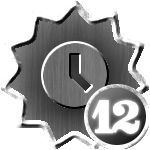Thats not entirely true.
Its not just because Beethoven was "a rebel who broke rules".
Rock and roll grew out of folk music more than classical music. That isn't to say that there was no influence -- European art music "thinking" had an impact on early blues and jazz, for example. But rock and roll did not grow out of a couple "art music" composers sayin' "forget these violins, lets get some guitars, bro" [insert heavy metal horns hand here].
There is however, a strong cross polination of the two right now. You have "indie 'classical'" groups like BUILD, groups like The Books, and composers like Missy Mazzolli writing "rock 'n' roll in tuxedos" (as Mario Davidovsky put it).
Not to mention the impact and influence classical music has had on pop music -- Varese's impact on Zappa (or Joel Thome's reimagining of Zappa music with Zappa's Universe -- check it, Thome's a genious), Penderecki's influence on Radiohead (they claim to notate all of their music as they write songs). Or the impact Stockhausen had on The Beatles (or classical music in general, lets not forget that "All You Need is Love" has a bit o' Bach in there).
Classical music also gets sampled a bunch -- Prokofiev's "Montagues and Capulets" (a.k.a. "Dance of the Knights) from his Romeo and Juliet can be heard in tracks by Sia, Necrophagist, Hollenthon, Blood Axis (yup, apparently metal heads like their Prokofiev), etc., Jay-Z has sampled Morricone and Pavarotti, Ludacris, Cameron, and Evanescence all sample Mozart's Requiem.
Orff has been sampled by everyone and their mothers, as has Bach.
The list goes on, and on, and on, and on, and on, and on, and on, and on, and on, and on, and on, and on, and on, and on, and on, and on, and on, and on, and on, and on, and on, and on, and on, and on, and on, and on, and on, and on, and on, and on, and on, and on, and on, and on, and on, and on, and on, and on, and on, and on, and on, and on, and on, and on, and on, and on, and on, and on, and on, and on, and on, and on, and on, and on, and on, and on, and on, and on, and on, and on, and on, and on, and on, and on, and on, and on, and on, and on, and on, and on, and on, and on, and on, and on, and on, and on, and on, and on, and on, and on, and on, and on, and on, and on, and on, and on, and on, and on, and on, etc.



